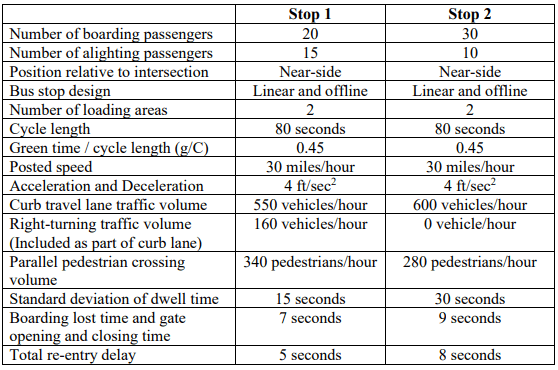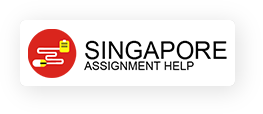| University | National University of Singapore (NUS) |
| Subject | CE4221: Design of Land Transport Infrastructures |
Question 1.
A transit agency is planning to build a heavy rail transit line and wants to evaluate the capacity of cab signalling system and moving block signalling system with fixed safety distance. The plan is to use trains consisting of a maximum of eight 75-ft cars. Trains will operate at a maximum of 60 mi/h (88 ft/s) and will be traveling at 32 mi/h (47 ft/ s) when entering stations if the cab signalling system is chosen, and at 34 mi/h (50 ft/s) if a movingblock system is selected. Safety distance for moving block signal is 165 ft, breaking speed
factor is 0.75 (75%), acceleration/deceleration is 4.3 ft/s2 , time lost in breaking jerk limitation is 0.5 seconds, and brake system reaction time is 1.5 seconds. The minimum train separation is 49.1 seconds for cab signalling system.
a) What is the minimum train separation possible with a moving block signalling system with fixed safety distance?
b) Make appropriate assumptions for dwell time and operating margin, and compute vehicle capacity (trains/hour) for both signalling systems. Assume that the minimum headway is governed by non-interference headway.
c) The agency would now like to know if it can economize on construction by building a flat junction at a point where two of its lines will diverge. The agency plans to build its tracks 16 ft (5 m) apart and use #10 turnouts (switches) with a throw-and-lock time of 6 seconds at mainline junctions. Compute the limiting junction headway and evaluate new vehicle capacity (train/hour) for each signalling system.
Question 2.
Transit authority currently runs a bus service on one-way two-lane (i.e., Type 2 lane) in the non-CBD area of a metropolitan city, with a peak frequency of 10 buses/hour in mixed traffic. Buses stop at every stop, with an average block length (i.e., the distance between stops) of 660 ft.
The current boarding scenario reflects double-channel non-level boarding using smartcard, in which 45% of passengers use channel 1, and the remaining 55% use channel 2 of the front door. All alighting passengers use the single-channel rear doors with smartcard checkout. The bus facility has two types of stops, whose specifications are provided below:

1. Estimate the average bus speed along the facility.
2. What will be the new average bus speed if the boarding involves no fare payment and passengers pay during smartcard checkout while alighting through the single-channel rear door?
Buy Custom Answer of This Assessment & Raise Your Grades
Looking for professional NUS assignment help for CE4221 Design Of Land Transport Infrastructures? Singapore Assignment Help is the leading online assignment help website in Singapore. Our experienced writers are adept at writing top-notch quality assignments on civil engineering topics. You can trust us to get civil engineering assignment help in Singapore that is 100% accurate and composed from scratch.
Looking for Plagiarism free Answers for your college/ university Assignments.
- HRM331: Talent Management – Strategic Shift from the War for Talent to the Wealth of Talent
- Marginalised Populations – The Structural and Cultural Exclusion of People Experiencing Homelessness in Singapore
- CVEN3501 Assignment 2: Groundwater Modelling of Drawdown from a Pumping Bore
- CSCI312 Assignment 2: Conceptual Modelling and Implementation of a Data Warehouse and Hive Queries
- CH2123 Assignnment : Fugacity, VLE Modeling & Henry’s Law Applications
- BAFI1045 Assignment -Constructing and Evaluating Passive and Active Portfolios Based on the Straits Times Index (STI)
- PSB501EN Assignment 1: Engineering Systems Integration: A Multi-Technique Approach to Mechanical Analysis
- FIN2210E/FIN2212E Group Assignment: Financial Risk Management Analysis of Bursa Malaysia Companies
- FLM101 Assignment: A Cinematic Dissection: Stylistic Elements and Their Thematic Significance
- Assignment: Transforming Talent in the AI Era: From War to Wealth through Ecosystem Innovation

